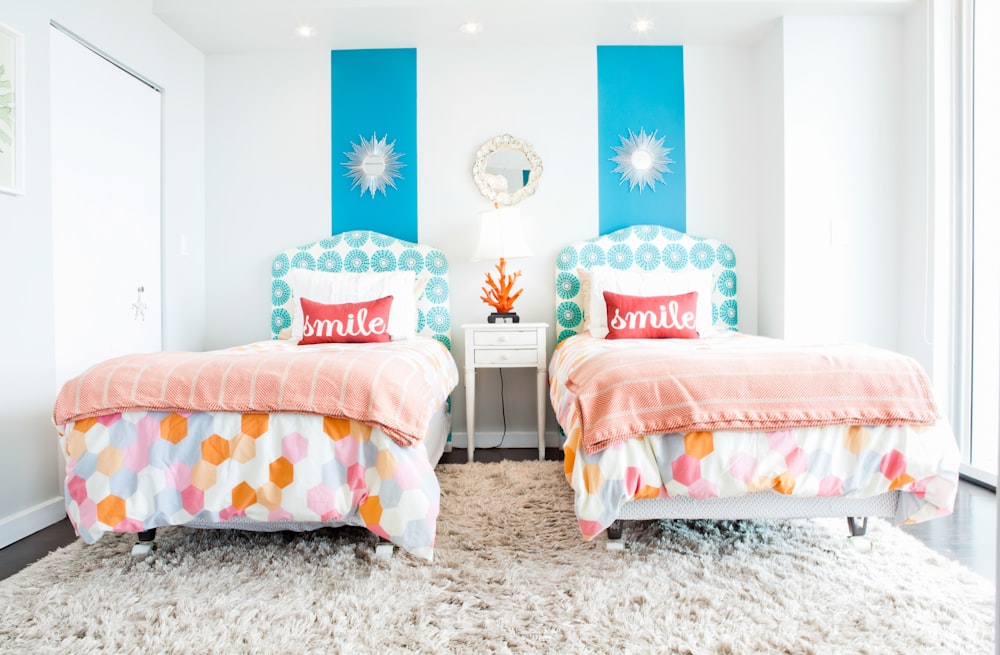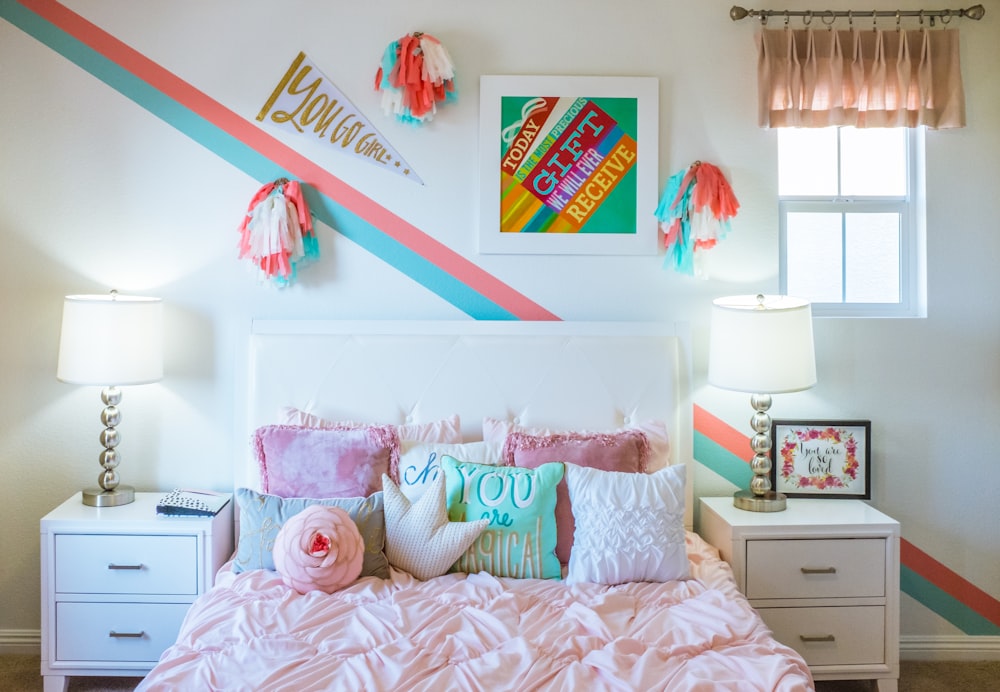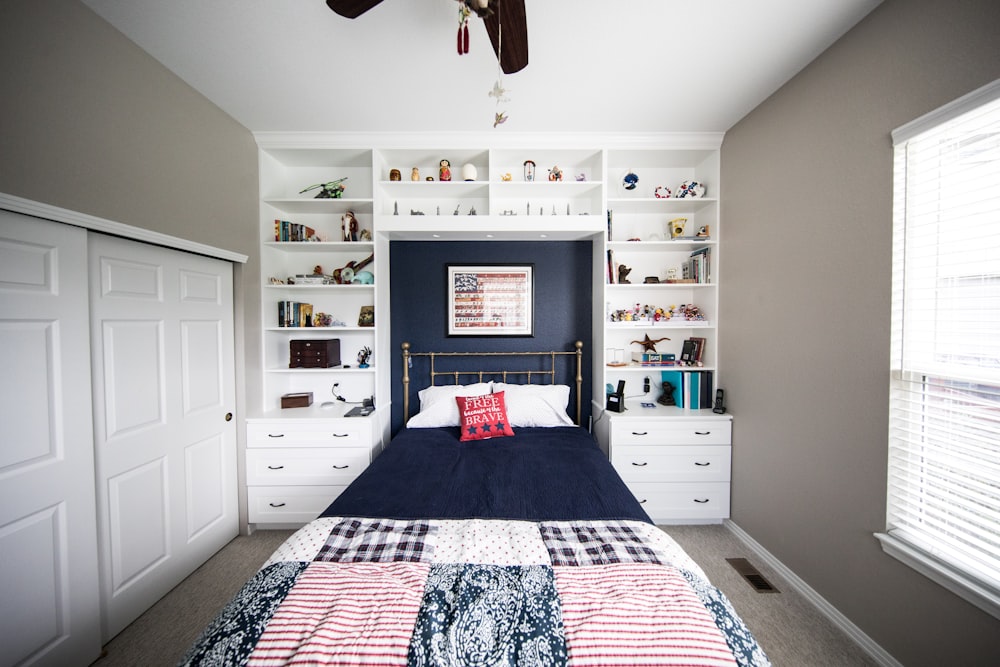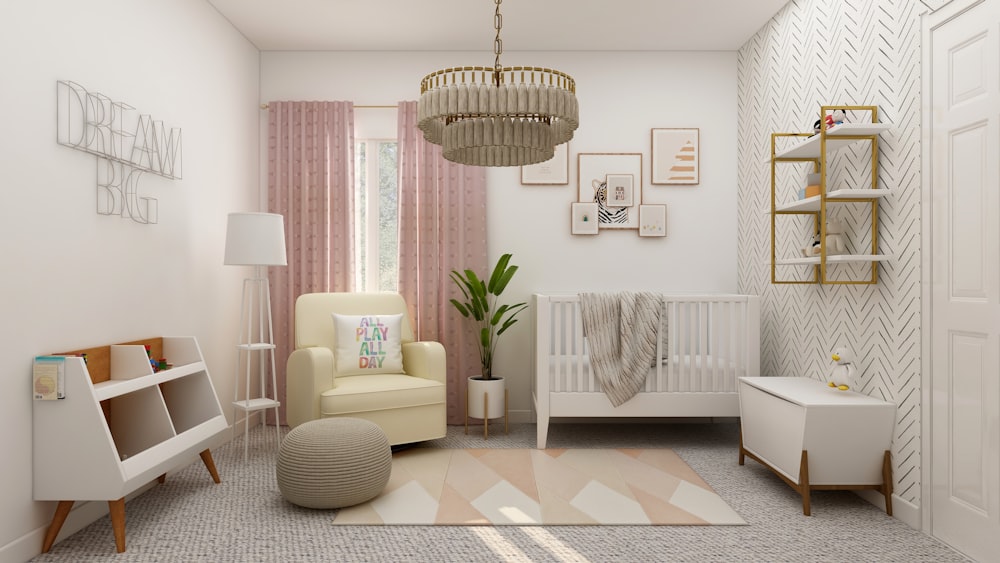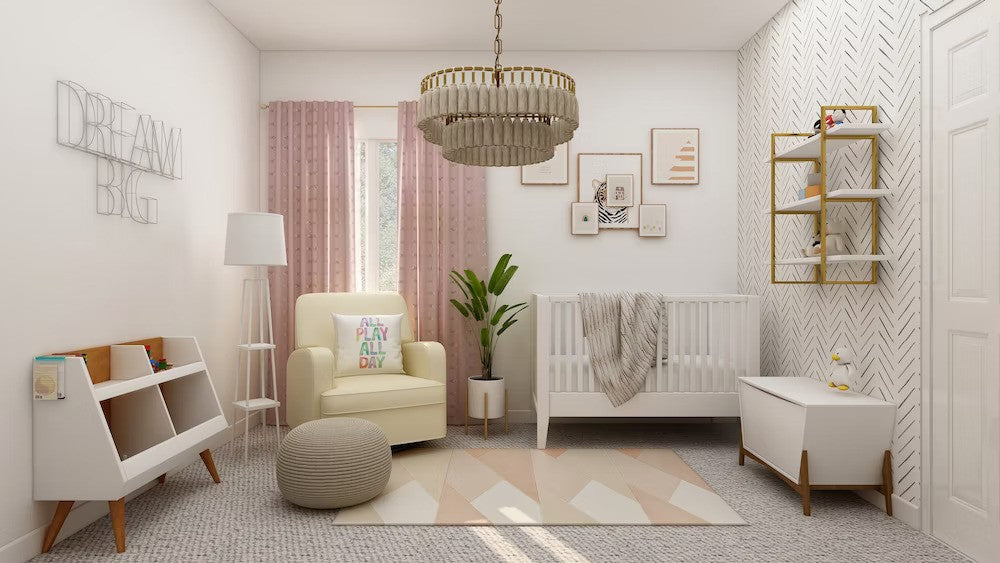
How To Design A Kid's Room
The overriding purpose of a child’s bedroom really doesn’t change from the time they are born. It’s a place for them to rest, to feel safe and to develop a sense of self. It can also be a place to play, to dream and to grow. Which is why the idea of setting up a child’s bedroom can be quite an overwhelming one. One universal characteristic of children’s rooms is that they are impermanent. The room you set up for your newborn is not going to look the same when they are 5 or when they are in their teens, even though it may well be the exact same space.
When to transition a room for a child can depend on a number of factors, including the child’s age, development, family needs, finances (if new items are involved) and your time and headspace to do so. How to make that transition in terms of setting up, selecting items and decorating a room can re-awaken even the most sleepy of monsters from under your own bed, and so I offer a little guidance for each stage and tips on how to make the process feel easier and fun for everyone, including you.
Newborn: Birth to 18 months
This is the first room you will ever set up for your child and possibly the most exciting one. It’s easy to get lost in the joy of choosing cute colour schemes and accessories (which, lets face it, is so much fun) but don’t forget to focus on safety, temperature and comfort. Ensure any baby furniture complies with the Australian Standards set by the Australian Competition and Consumer Commission, especially your baby’s cot. The room should maintain a comfortable temperature for sleeping and be able to let in and block out sunlight. And of course, always make sure cords, electricals and any other choking hazards are well out of reach. Try to keep items to a minimum, you want your baby’s room to have a sense of space and lack of clutter and dust.

This is a fairly short stage in terms of your choice of furnishings, once your child is out of the cot and more self-sufficient, the room will change dramatically. Consider furniture pieces that transition with your child to avoid re-purchasing in just a few years. There are some super stylish convertible cots available now that will see your child from birth right through to about 5 years, depending on how quickly your child grows, as well as items like change tables that convert to storage or desks.
In terms of colours, I advise keeping walls neutral. That doesn’t have to be white. A soft but warm grey can be modern and a stunning backdrop to art, accessories and furnishings, especially timber.
Toddler: 18 months – 3 years
Toys start to mount up fast. The key is to bring stimulation into the space without overstimulating. Start thinking seriously about storage. Some items are really to be looked at only, so use shelves to creatively display toys that are better seen than touched. Avoid filling large toy boxes. Whilst they seem a quick and easy way to hide and store toys, they can be hard for kids to open themselves and also don’t encourage them to explore as they cant see what’s in the box at all times. Consider smaller boxes, containers or fabric pouches that kids can access. When buying toys look for low-toxic options where possible.
If you used a non-convertible cot you might be looking to transition your child to their first bed. Be aware if you purchase a racing car or princess bed, you may only get a few years out of it at the most. Having said that, having your child love their bed is important. Don’t discount a more neutral bed with fun bed linen that’s easy and relatively inexpensive to replace when little minds change their mind.
If they are not already, decals will become your best friend. They can change a room in an instant (ok an hour maybe) but are removable and can be mixed with bought or kids artwork, other decals and even paint colour to excellent effects.
In terms of safety, keep chairs, stools and benches away from windows and shelves. A safe night light can keep the monsters at bay.
Junior: 4-7 Years
Generally children transition from pre-school to big school during these years, so there is a lot of change going on. Kids may have a good idea about what they want in their room by this age, but just not how to make it look the way you can live with it! Help them develop their sense of self by talking to them about how they would like their room to look and then find a solution that you can live with. There’s always a way to introduce either a theme or an element that means a lot to them or piques their interest. Focus on one or two things as a concept rather than trying to make their room look like a kindergarten. Remember it’s a place for them to be them but also to sleep.
Encourage independence. Have hooks and rails at accessible heights so they can access some clothes and start to make decisions for themselves. Drawers and doors should be easy to open and shut. A desk at an appropriate height can foster creativity and a space for homework. If you have the space, consider a desk or table big enough to encourage sharing and interaction, a key to socialisation at this stage.
School and sports awards and certificates start to appear. If overt displays are not your thing, line the inside of their wardrobe door with awards and other items that start being collected at this age.
I recommend avoiding movie character themes for kids' rooms. What do you do when your little Elsa decides Frozen is ‘so yesterday’ and everything in her room is branded? It makes every new movie a potential re-style! If you simply can’t avoid giving in, keep it to very small items that can be replaced easily, worked in with neutrals that will stand the test of time.
Tween Rooms: 8 to 12 years
If you haven’t already, (and it does often happen in Junior years), it's time to transition into at least a single adults-style bed. The bed you buy now should last them the rest of their tween and teenage years, so choose carefully. Get your kids involved in the choice. Mattresses are also important. Latex mattresses are toxin free, ergonomic, anti-fungal and anti-bacterial, but can also be hot if your child is a hot sleeper. Be sure to provide a clean, supportive mattress that supports their growing bodies and allows them a good night’s sleep.
By this age, your kids should definitely be having an input into how their room feels or what they really want. It’s a reflection of them at a time most important to encourage self awareness. Don’t forget a mirror for grooming.
Think about storage for games, books, sports equipment, school items and homework. Organise the room together so that your child understands taking responsibility for their items, like knowing where their school books and homework are each day. As with all storage, having a dedicated place for everything in their room makes it easier to keep clean, which is a key to household happiness as they enter their teenage years.
Teenagers: 13 to 18 years
There’s a pretty big differentiation between a 13 year olds room and an 18 year olds room, however there are a few overall design elements that cover this stage.
This is a good time to re-style your child’s room, and make them feel like they are at a new stage of life. Get rid of any kiddie posters or decals and give the room a more grown up feel, with full consultation with your child. Changing the wall colour can be a dramatic and effective way to make their space feel really new. Combine this with new, grown up decals, or artwork, accessories and lighting.
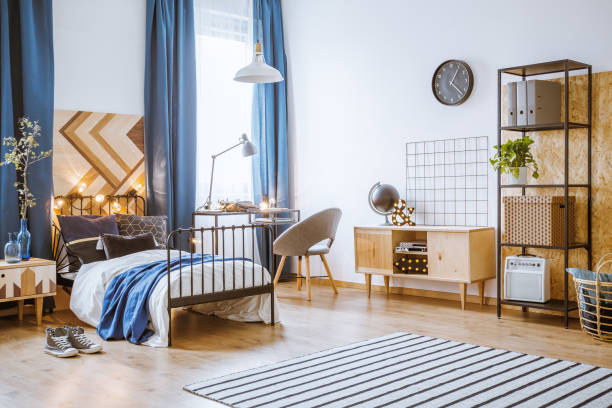
This is their space now and they should have a big say in the look and feel.
Think a lot about focussing on an area for quiet study including a desk, a chair (ideally ergonomic) and a desk lamp, as well as appropriate storage for laptops etc.
Privacy starts to become important at this age, both from the family and from outside the home, so ensure window treatments block out light and passers by. Ensure your child’s room has a door by this age.
While styling your kid’s room, make sure to take his or her preferences and habits into account. Every child is unique in his or her own way, and it’s always great to go with a look that captures tons of personality. So encourage your child to get involved in the process – it’s bound to be fun and is also the perfect way for you to spend time together and bond! Remember to check it out Lifestyle online store for juvenile furniture or visit our store at Fresno, California!


